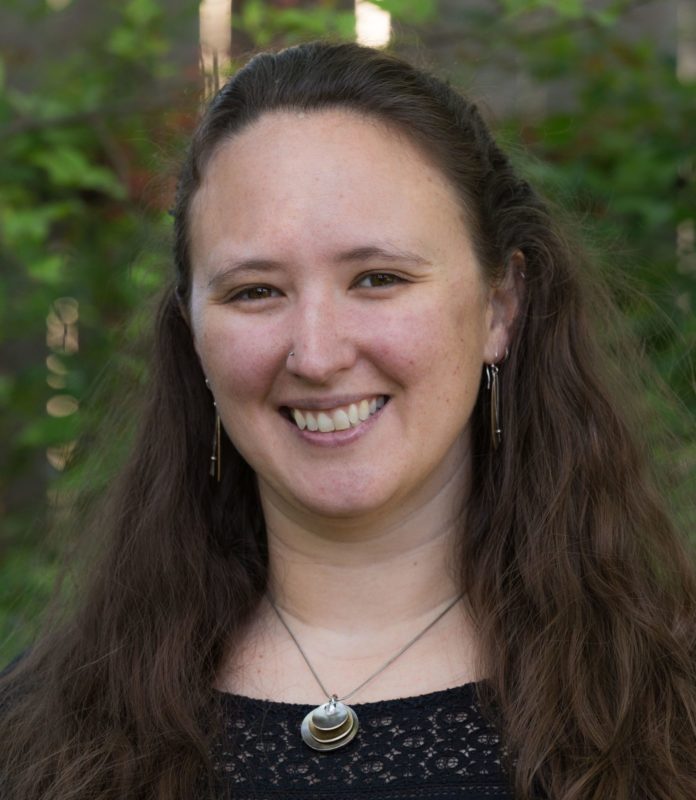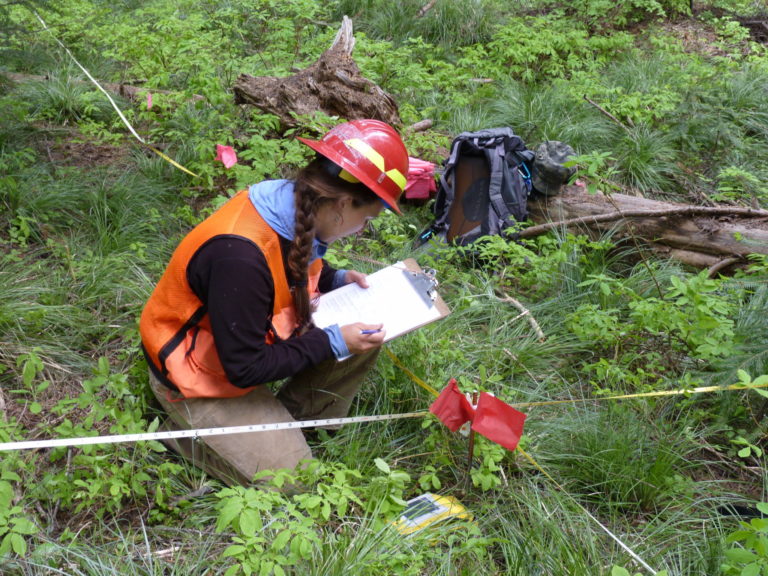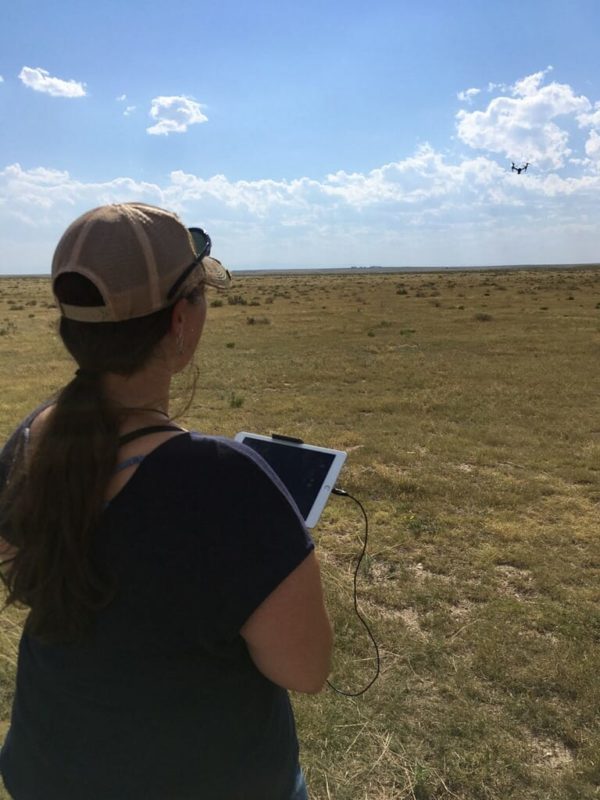
NREL scientist lands multiple NASA grants to support global remote-sensing research
Original article can be found here in Warner Source
When spatial ecologist Jody Vogeler arrived at Colorado State University in 2018 as a research scientist in the Natural Resource Ecology Lab, her temporary management of a remote sensing lab quickly evolved into building her own independent research group. Less than three years later, the Vogeler Research Group and collaborators have been awarded four separate NASA grants totaling over $3 million in project funds, among a variety of other funded research projects.

Vogeler, also an affiliate faculty in the Department of Ecosystem Science and Sustainability in the Warner College of Natural Resources, has built her career integrating remote sensing data sets with field surveys to better understand forest disturbance dynamics and wildlife-habitat relationships.
Her recent NASA awards range from studying urbanization and biodiversity in Africa to monitoring forest carbon and wildlife habitat across the western U.S. (see sidebar for more details).
The Vogeler lab processes a variety of remote sensing data, conduct geospatial analyses, and provide research results and spatial tools to land and other managers across national and international regions and ecosystems.

In her lab, Vogeler is focused on outcomes and how the work fits into current understanding of these ecosystems. Her team’s work contributes to knowledge at the management level, which has been a big help in securing the recent funding from NASA, she said.
“I push to make sure we step back from the research and take a broader perspective on how our work feeds into the bigger picture,” Vogeler said. She challenges her team by asking, “How can we interpret results or create spatial products that are relevant and helpful as tools for managing the land and making or monitoring policies?’”
Vogeler also said she stresses the importance of rigorous validation of those spatial products to be able to relay the strengths and limitations of tools to end-users.
Building her research lab has not only been an opportunity to lead talented people but to also manage a group that has emerged as leaders in remote sensing work at CSU, using new technologies and understandings.
“One of my favorite things to do is to bring people together; it’s fun to see folks with various expertise come together to find unique solutions to challenging questions,” Vogeler said. “I also love getting the research out there, getting the results into the hands of people who are tasked with managing lands for multi-use and are having to weigh impacts of various planning decisions.”
A background in collaboration
Vogeler came from a strong background of collaborative work and mentorship, completing her PhD and postdoc at Oregon State University where she worked for a top international remote-sensing lab under her mentor, Warren Cohen, a research forester who works for USDA Forest Service. Cohen, a CSU alumnus, received his doctoral degree in 1989.
She held a 3-year Research Associate position at University of Minnesota, before starting her lab at CSU, where she worked closely with collaborators from multiple universities, federal and state agencies.
After completing her undergraduate degree in fisheries and wildlife at the University of Missouri, Vogeler earned a master’s degree at the University of Idaho. There, she worked closely in a lab utilizing LiDAR, which stands for Light Detection and Ranging, for characterizing forest bird habitat. LiDAR is a remote sensing method that uses light in the form of a pulsed laser to measure elevation and vegetation structure. At the time, her mentor Kerri Vierling, was one of the first wildlife scientists to start incorporating LiDAR into wildlife habitat assessments.

“Getting to go work with Kerri in her lab was really the start for me in using remote sensing as a tool to look at wildlife habitat, and LiDAR, in particular,” said Vogeler.
Her collaborative approach helped propel the lab to its current state, said Steven Filippelli, a research assistant in Vogeler’s lab.
“Jody is excellent at collaboration and communication. She can build a rapport with people and is able to understand and communicate what their intentions and ideas are,” Filippelli said.
Having recently earned a Ph.D. and completing a post-doc before running the lab also put her at the cutting-edge of the technology, said Eric Jensen, who earned his master’s degree at CSU under her mentorship.
“This is a field that has evolved a lot in the last five or 10 years,” Jensen said. “Because of how recently she completed her Ph.D. and because she develops a lot of her projects, she has a really in-depth and current knowledge of different facets of remote sensing. Her experience was invaluable to the lab and helped me as a graduate student.”
Looking to the future
Vogeler said she plans to keep up the momentum she and her lab have had in the past three years as she looks to the future.
“These first few years at CSU have been my chance to bring together a talented group of scientists and nurture wide ranging collaborations to get our feet under ourselves as a lab,” Vogeler said.
“With this new NASA funding support, I am excited for my lab to venture into contributing to cutting edge international research as well as projects closer to home and continue to seek novel data fusions to provide valuable spatio-temporal tools for gaining a better understanding of ecosystem functioning and impacts of our changing world.”
Vogeler’s Four NASA-funded projects
Urbanization Driven Land Cover Land Use Change in Africa
- Project Title: The last urban frontier – Assessing drivers of urbanization and tradeoffs among social and ecosystem services associated with LCLUC in Africa
- Funder/Grant: NASA Land Cover Land Use Change (#20-LCLUC2020-0006) Total Award Amount: $729,569
- Principal Investigator: Dr. Jody Vogeler
- Collaborating Institutions: University of Pretoria – South Africa
GEDI for Wildlife and Biodiversity Assessments
- Project Title: Evaluating GEDI data fusion tradeoffs for characterizing critical habitat components for animals and biodiversity assessments
- Funder/Grant: NASA GEDI Program (#20-GEDIST20-0022) Total Award Amount: $441,151
- Collaborating institutions: University of Idaho (Principal Investigator Dr. Kerri Vierling), University of Wyoming
Carbon Monitoring Across the Western U.S. (1984-2020)
- Project Title: A bottom-up, stakeholder-driven Carbon Monitoring System for regional biomass carbon dynamics: Phase II
- Funder/Grant: NASA Carbon Monitoring Systems (#18-CMS18-0004)
- Total Award Amount: $1,113,959
- Collaborating institutions: USDA Forest Service (Principal Investigator – Dr. Andrew Hudak), University of Washington, Oregon State University, Washington State University, University of Minnesota
Impacts of Rewildling and Urbanization on Biodiversity in South Africa
- Project Title: Biodiversity, connectivity, and ecological forecasting: Applying NASA Earth Observation data to conservation management in the Greater Kruger National Park Region, South Africa
- Funder/Grant: NASA Ecological Forecasting (#20-ECOF20-0014)
- Total Award Amount: $749,723
- Principal Investigator: Dr. David Bunn (CSU)
- Collaborating Institutions: University of Michigan, Arizona State University, South African National Parks, Organization for Tropical Studies in South Africa, The Nsasani Trust
Learn more about Vogeler and her team at her website. The Natural Resource Ecology Lab is committed to research, education and engagement of ecosystem science.